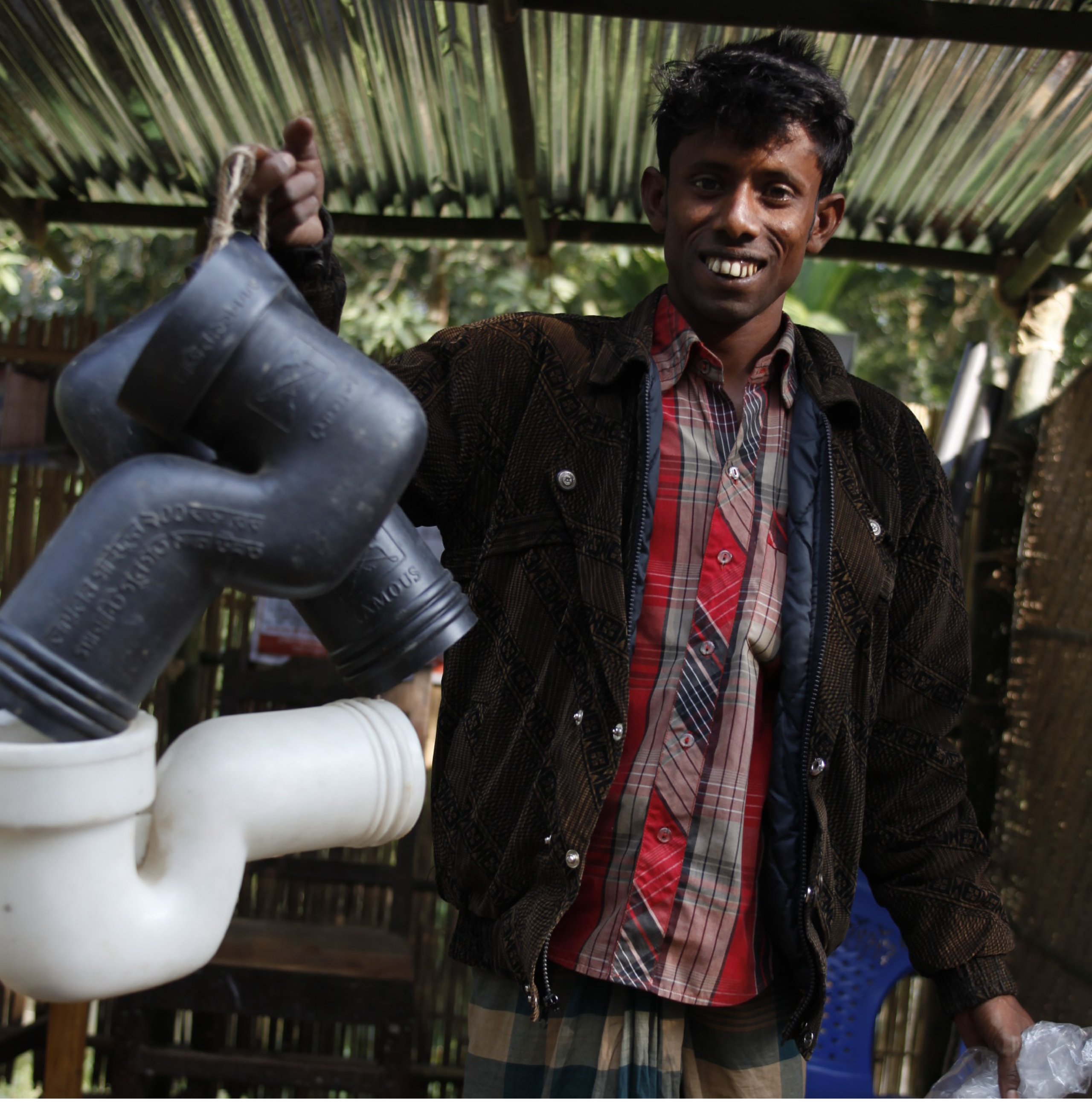Rajgarh Block of Awar district, (Devti, Ramsinghpura & Srichandpura), Rajastan
In collaboration with

February 2024- December 2024
Reduce diseases associated with open defecation. Promote community well-being and ensure participation in all project development, monitoring, and evaluation stages.
Objectives
- Increase access to sustainable and improved sanitation facilities for vulnerable communities and children.
- Encourage positive behavioural changes regarding sanitation practices.
- Establish a community-level governance system for these facilities’ sustainable use and maintenance.
Beneficiaries
250 direct
50 households will gain access to improved sanitation facilities.
3,930 indirect
Community members benefiting from the CLTS initiative
On the ground
Open defecation is prevalent due to a lack of sanitation infrastructure. Waterborne diseases such as diarrhoea and cholera are alarmingly common in the area.
In the Alwar district, adequate sanitation access remains a significant challenge. A substantial portion of the population lacks basic services. Reports indicate that a considerable number of households in this region do not have access to toilets or hygienic sanitation facilities.
The lack of adequate sanitation infrastructure leads to open defecation, contaminating the environment, water sources, and food, contributing to the spread of diseases. Waterborne diseases like diarrhoea and cholera are especially prevalent in the area. Poor hygiene practices contribute to frequent illness among children, affecting their education and overall well-being. Addressing this issue is essential for health, dignity, and safety. For women and girls, lack of privacy and security remains a serious concern due to inadequate sanitation facilities.
Improving sanitation facilities is vital to reinforcing children’s nutritional health, including access to clean water, promoting its use for personal hygiene, increasing toilet availability and usage, and fostering good hygiene practices.

In detail
This project prioritizes addressing sanitation issues by providing improved facilities, specifically through building toilets and implementing the SANTOLIC (Community-Led Total Sanitation) program.
Project Development Stages
1. Demand generation and awareness program on improved sanitation facilities in communities and schools. Awareness will also be raised at Anganwadi centres, which provide basic nutrition, health, and education services to children up to six years, pregnant women, and nursing mothers, as important contact points for community well-being.
2. Implementation of CLTS.
3. Construction of individual toilets in selected households.
4. Training and strengthening the Water, Sanitation, and Hygiene Committee to maintain facilities and promote behavioural changes.
CLTS is an innovative methodology that mobilizes communities to conduct their own assessment and analysis of open defecation. It seeks to instil a collective sense of disgust and shame among community members as they confront the harsh realities of mass open defecation and its negative impacts. The core premise is that no human can remain indifferent once they realize others’ faeces contaminate them.
Communities generally react with resolve and create action plans to become open defecation-free (ODF) through their efforts. The method promotes innovation, mutual support, and locally appropriate solutions, leading to greater ownership and sustainability. Success is defined by whether the area achieves open defecation-free status.
The CLTS approach aims to generate demand and local action without direct financial assistance.
Implementation Process
- Mobilize the community to demand sanitation services, including the adoption of hygiene practices, such as bathroom use, handwashing with soap at critical times (before and after meals, after bathroom use, before handling food, after handling faeces or solid waste), protecting water sources, and the safe disposal of children’s excrement.
- Drive behaviour changes through community involvement.
- Accelerate community coverage and use of sanitary toilets by developing local capacities and generating demand to achieve ODF.
- Ensure community ownership by engaging through existing or new Village Health, Sanitation, and Nutrition Committees (VHSNCs).
Monitoring and Evaluation
Monthly and project completion reports are generated to assess the program’s quality and effectiveness. Project staff monitor outcome- and objective-level indicators and submit reports for proper evaluation. Within the first three months, measurements are completed, and end-of-project goals are set for each indicator. Project staff, national-level technical staff, and other stakeholders review project progress after compiling relevant indicators every three months. Monitoring these indicators allows for reevaluating the relevance and likelihood of achieving the indicator and assessing potential adjustments in activities and project direction.
Prospects for Sustainability
The CLTS program aims to raise awareness and impart essential knowledge for maintaining these facilities; however, educating the community on proper toilet management practices is crucial. Before initiating construction, it is essential to foster community interest in improved facilities, prioritize community engagement, ensure the safety and maintenance of these facilities, and encourage community ownership.
For this, a Water, Sanitation, and Hygiene Committee must be established within the community, with its members trained in facility operations, maintenance, and proper usage. The committee plays a fundamental role in instilling a sense of ownership, empowering communities to sustain their facilities over time. It also encourages education among unemployed youth, women from self-help groups, marginalized individuals, and people with disabilities in basic toilet maintenance. This training equips local people with the necessary skills to address issues and provides affordable solutions through income-generating opportunities.
Furthermore, collaboration with local government and the Swachh Bharat Mission (SBM) department ensures ongoing technical assistance. This inclusive strategy fosters community participation, ensures lasting practices, and empowers individuals by enhancing their skills and economic opportunities within the sanitation sector.

